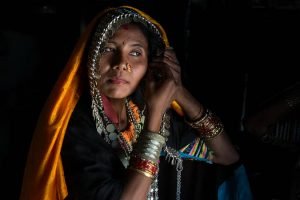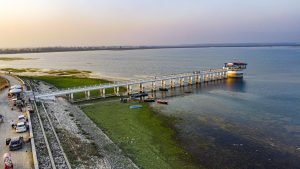Rana Tharu of Khatima: A Glimpse into a Resilient Community
Introduction
Nestled in the Terai region of Nepal, the Rana Tharu community of Khatima stands as a testament to resilience, cultural richness, and a profound connection to their land. Rooted in ancient traditions and yet embracing modern challenges, the Rana Tharu people of Khatima exemplify a harmonious blend of heritage and progress. In this article, we delve into the unique characteristics, cultural significance, and the evolving identity of the Rana Tharu community in the enchanting locale of Khatima.
Geographical and Cultural Context
Khatima, a picturesque region in the Terai, serves as the backdrop for the Rana Tharu community’s journey. The lush plains, fertile soil, and abundance of flora and fauna have deeply shaped the way of life of the Rana Tharu people. This geographical context has influenced their agricultural practices, close connection to nature, and the preservation of cultural practices that reflect their distinct identity.
Cultural Heritage and Traditions
The Rana Tharu of Khatima boast a vibrant cultural heritage that is intricately interwoven with their everyday lives. From traditional attire adorned with intricate embroidery to melodious folk songs and dances that celebrate the changing seasons, their cultural practices are a living testament to their historical roots.
Festivals like Maghi, Sakela, and Haritalika Teej punctuate the year, providing a platform for the community to come together in celebration, prayer, and reflection. These festivals honor age-old traditions while fostering a strong sense of unity and shared identity.
Challenges and Resilience
As with any community, the Rana Tharu of Khatima have faced challenges in adapting to modernity. Urbanization, changes in agricultural practices, and limited access to resources have presented obstacles. However, the community’s resilience shines through as they navigate these challenges while holding steadfast to their cultural heritage and values.
Education and Empowerment
In recent years, there has been a growing emphasis on education and empowerment within the Rana Tharu community of Khatima. Efforts to improve access to quality education, vocational training, and awareness programs are equipping the younger generation with the tools they need to embrace the opportunities of the modern world while preserving their cultural identity.
Community Unity and Future Prospects
The spirit of unity within the Rana Tharu community of Khatima remains a cornerstone of their existence. Social support systems, cooperation in agricultural activities, and a shared commitment to preserving cultural practices have contributed to a strong sense of togetherness.
Looking ahead, the Rana Tharu of Khatima are poised to navigate the future with a balance of tradition and progress. By fostering sustainable practices, embracing education, and harnessing their cultural heritage, they are shaping a narrative of resilience and strength that will carry them forward into a new era.
Conclusion
The Rana Tharu community of Khatima is a microcosm of the intricate interplay between culture, geography, and human adaptability. Their story is one of resilience, cultural pride, and an enduring connection to the land that sustains them. As the Rana Tharu of Khatima embrace the challenges and opportunities of the modern world, they do so with a deep-rooted understanding of their heritage, an unwavering spirit of unity, and a commitment to forging a future that honors their past while embracing the promise of tomorrow.







